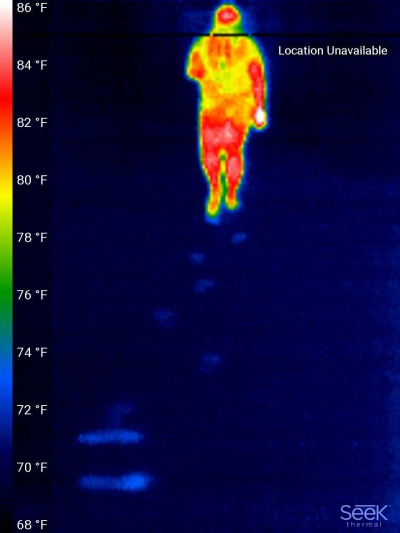Difference between revisions of "Ghost in the halls?"
Jump to navigation
Jump to search
| Line 1: | Line 1: | ||
[[File:21742071_1627337570650811_272623853_o.jpg|400px]] | [[File:21742071_1627337570650811_272623853_o.jpg|400px]] | ||
| + | |||
This is a person walking at a normal pace with shoes on. When you put your foot on the ground, you are applying a force to it while this is happening the ground also applies an equal force onto your foot, in the opposite direction, pushing you forward. Walking involves the connection of surfaces (that is your shoe and the ground) without any relative movement. This is static friction which essentially gives off heat leaving a "ghost" foot print behind. In other terms it takes a certain amount of work (w) and energy (U) to walk that puts of heat (q). | This is a person walking at a normal pace with shoes on. When you put your foot on the ground, you are applying a force to it while this is happening the ground also applies an equal force onto your foot, in the opposite direction, pushing you forward. Walking involves the connection of surfaces (that is your shoe and the ground) without any relative movement. This is static friction which essentially gives off heat leaving a "ghost" foot print behind. In other terms it takes a certain amount of work (w) and energy (U) to walk that puts of heat (q). | ||
Revision as of 16:28, 14 September 2017
This is a person walking at a normal pace with shoes on. When you put your foot on the ground, you are applying a force to it while this is happening the ground also applies an equal force onto your foot, in the opposite direction, pushing you forward. Walking involves the connection of surfaces (that is your shoe and the ground) without any relative movement. This is static friction which essentially gives off heat leaving a "ghost" foot print behind. In other terms it takes a certain amount of work (w) and energy (U) to walk that puts of heat (q).
